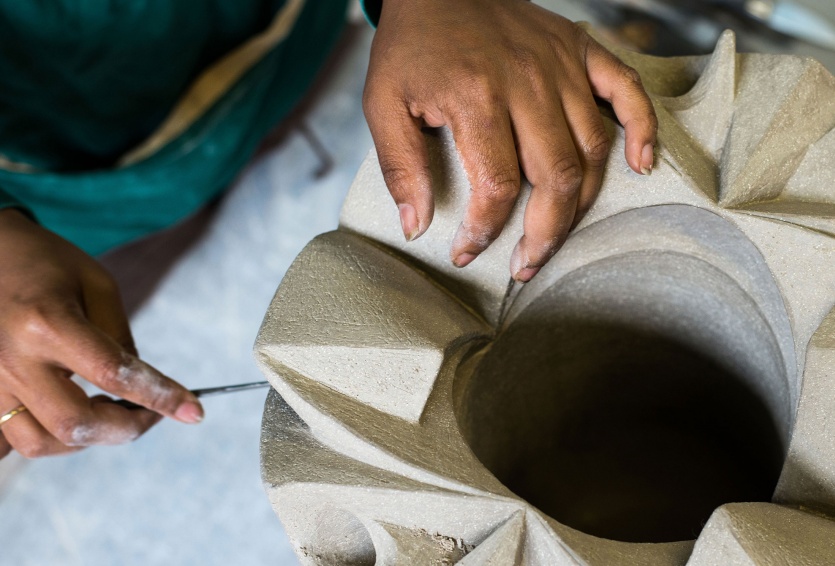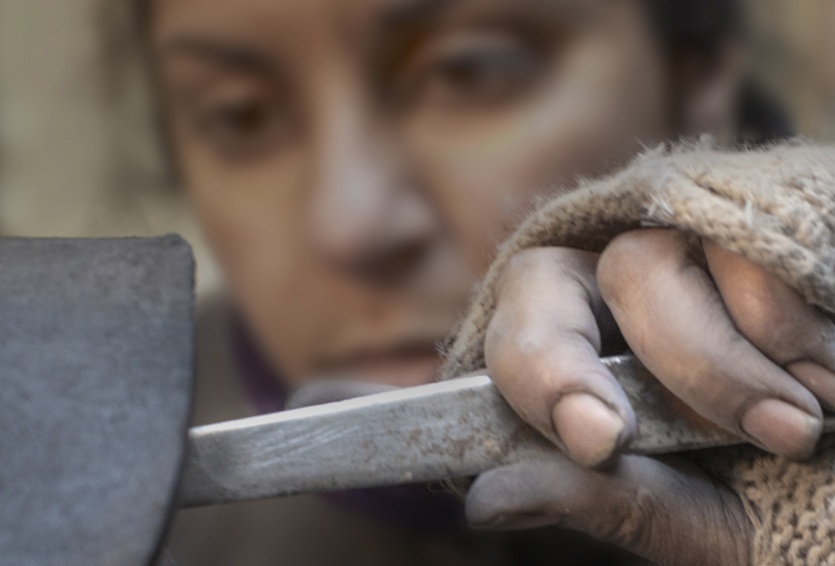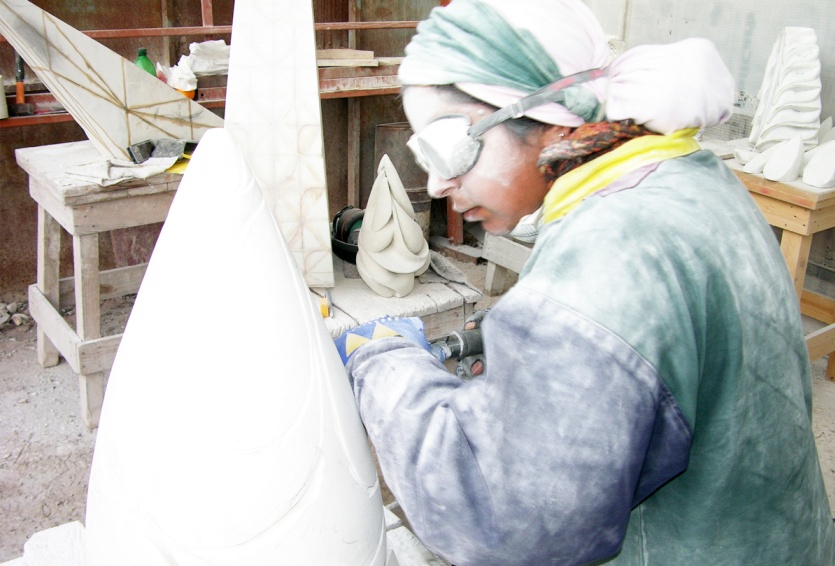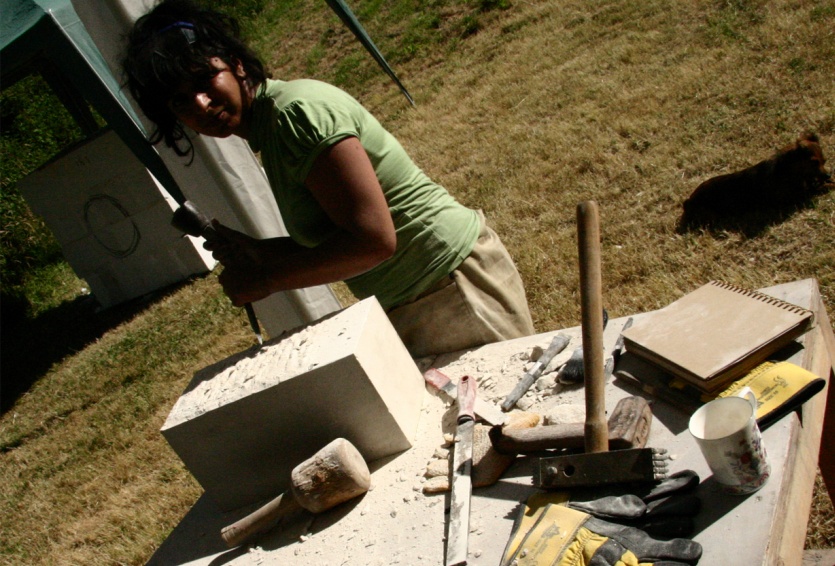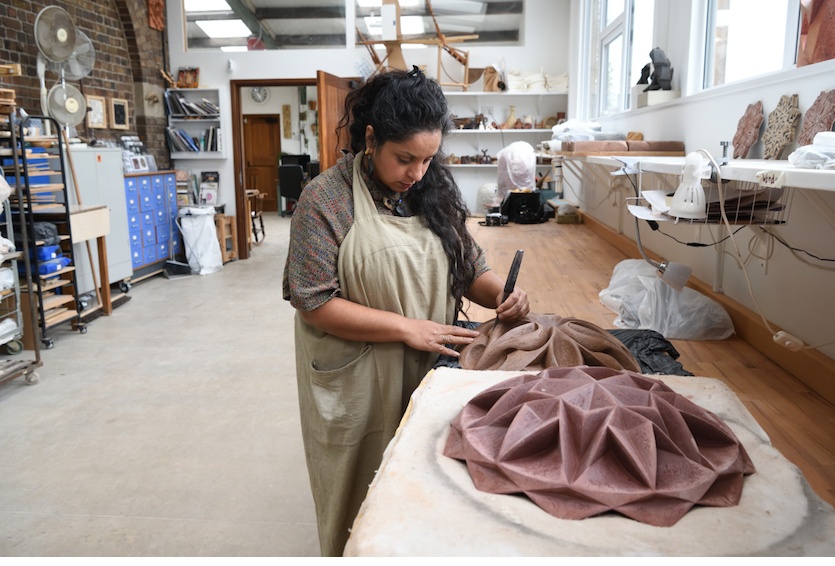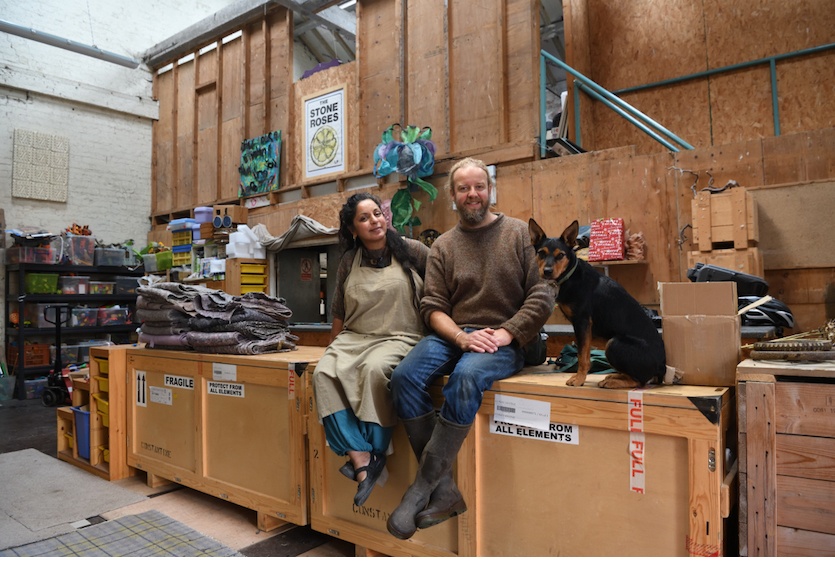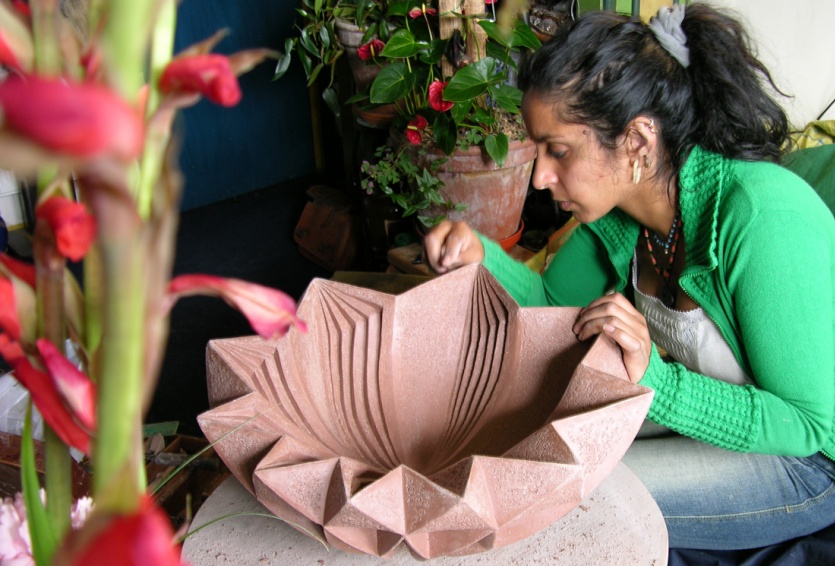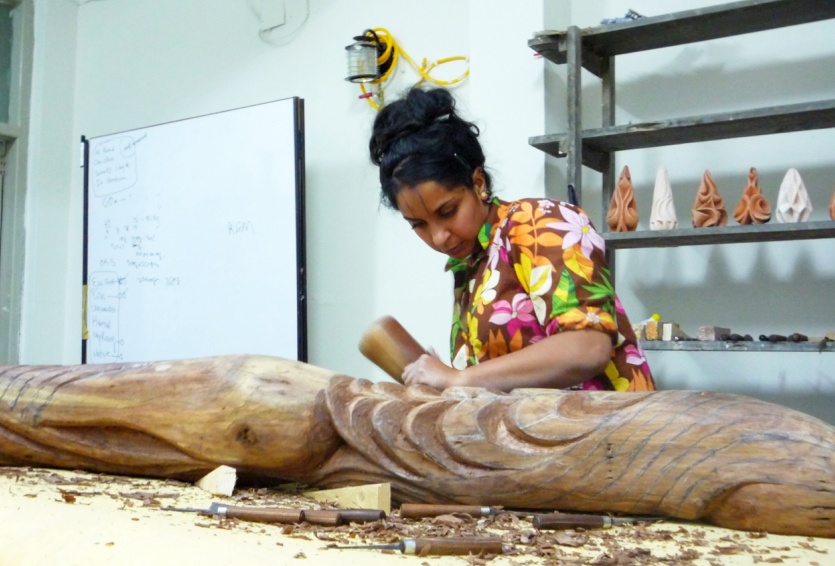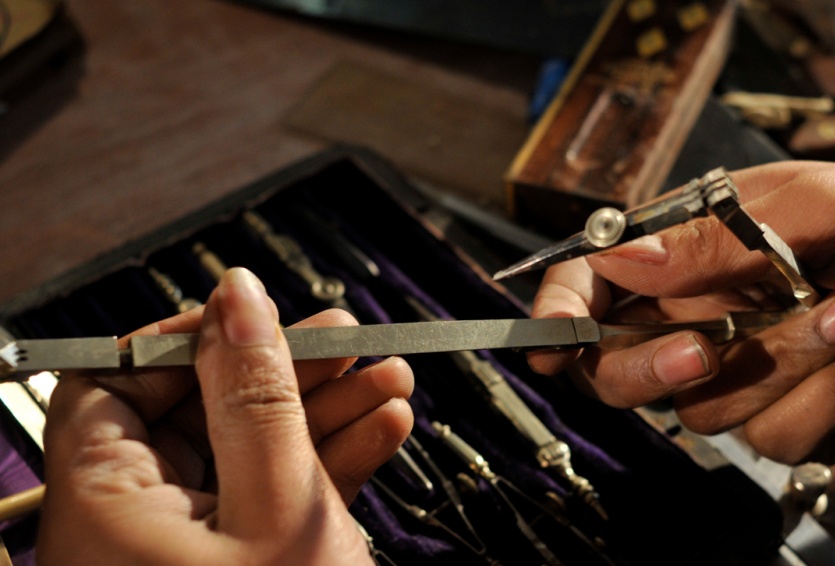Process and Methodology
When working in clay, I use heavily grogged clay that allows me to work on a large scale and utilise relatively thick surfaces to carve to my desired depth. I also concentrate on simple forms as the basis of my work in order to amplify the effect of the complex surface pattern combined with sharply contrasting contours.
Whilst creating my work, I go through different processes, each requiring a different mindset. I start by hand-building, and/or using a former to create the basis of a shape for my structure. This follows on to the next phase, which involves exploring numerous possible design outcomes.
At this juncture, I shut out all external stimuli; this enables my mind to run free. I do not allow myself to think about the inherent technical problems that may occur at the construction stage, as this may affect my freedom to think during this part of the creative process. Then I work out the mathematics of the pattern and the surface area of the form so that they work accurately and harmoniously together.
Finally, when the clay is at the right consistency, (in between leather-hard and stone-dry), I intuitively work out which way to carve each section of the design. Subsequently, this informs the remaining pattern of the overall form without having to work it out on paper.
Each piece varies between 100 and 280 hours or more, depending on the size and complexity of the pattern. The work is slowly dried over several weeks/months, to ensure a steady drying process. The pieces are fired to variable temperatures depending on the clay body's capability.
Over the last several years I have worked with a diversity of materials exploring their potential. When working with other materials such as stone, wood and plaster, the processes and methodology in creating these pieces are very similar to when I am working with clay, the only difference being is the tools used and the material behaviour and properties.



